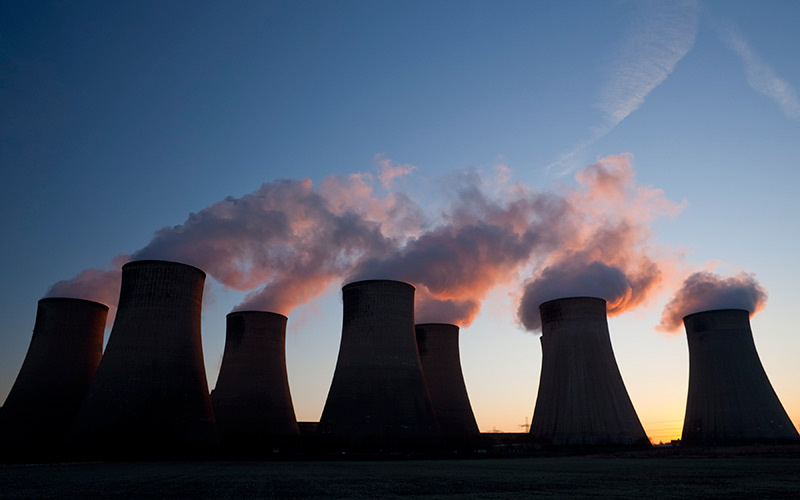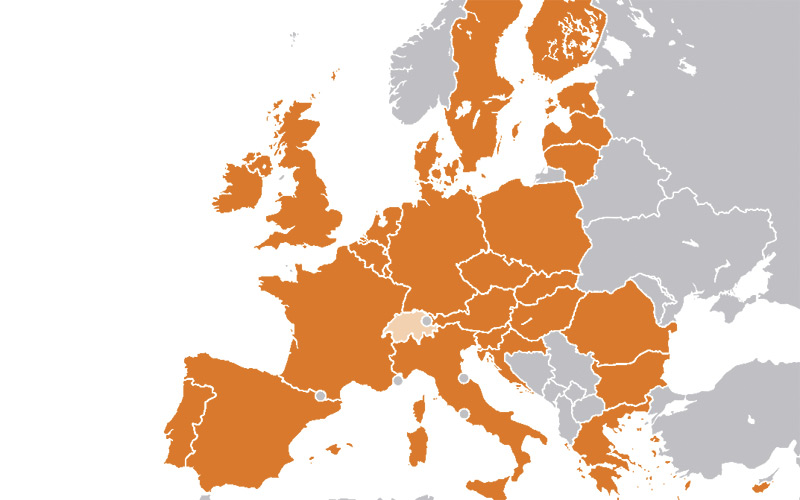Leaving Euratom
Britain is hard at work on leaving the European nuclear agency Euratom. But even with a suitable transition, there remains much work for the government to do to prevent the significant disruption that industry is concerned about, writes Tom Greatrex at the Nuclear Industry Association

Even the most hardened of opponents of the European Union would accept that the process of leaving the EU, and disentangling more than four decades of negotiations, regulations and systems, is proving to be a complex and time-consuming process. For the civil nuclear industry, there is an additional layer of complexity that arises from the separate – but related – Euratom treaty, which effectively impacts every aspect of the industry’s activity: generating power, building new power stations, decommissioning old ones, scientific research and trade across international borders.
Whether or not it was strictly necessary or desirable to leave Euratom in parallel with leaving the EU, as the UK government has decided to do, the reality is that the complex process of disentangling the UK from Euratom, and simultaneously replicating arrangements that enable us to meet the same international requirements as currently apply, is well under way. More than a year ago, the UK Nuclear Industry Association (NIA) set out the steps that needed to be taken to put new arrangements in place, and avoid the disruption of the type of cliff-edge exit from Euratom that is in nobody’s interest. Unusually, and in comparison to other sectors, there is a strong mutual interest in avoiding disruption to an international industry and the supply of components, services and systems, which are routinely traded across borders, regardless of whether an individual state
has nuclear in its generation mix or not.
Alarm bells ringing
The clock has been ticking since the referendum, but it has only really been for the past 12 months or so that the alarm has started to sound. The UK government has woken up from what looked to many like a slumber, and is now rushing to get ready and out of the door in time for the end of 2020 – or if there is no deal, and no transition, by March 2019.
Euratom covers research and development for both fusion (most notably at Culham) and fission; safeguarding inspections at UK nuclear licensed sites; and the framework for international agreements between Euratom and the rest of the world and the nuclear single market, which enables the current friction-free movement of nuclear components, goods, services and personnel. Outside of Euratom, the UK needs to have its own mechanism for safeguarding inspections (that is, checking that fissile material is being stored and used correctly, in line with our non-proliferation obligations), bilateral agreements with other nations (Nuclear Co-operation Agreements), and a future relationship with Euratom.
Euratom


Established in 1957, the European Atomic Energy Community, commonly known as Euratom, exists to promote and support the development of nuclear energy in Europe by regulating the nuclear industry across the continent, safeguarding the transportation of nuclear materials, overseeing the safe disposal of nuclear waste and carrying out nuclear research. The treaty establishes strict safety standards for the nuclear industry and also governs nuclear safeguards; these ensure nuclear materials are not diverted from civilian to military activities.
While Euratom is a separate legal entity from the EU, it is governed by the EU’s institutions. The community consists of the EU’s 28 member-states and one associate state, Switzerland, and has cooperation agreements of various scopes with nine countries around the world: the US, Japan, Canada, Australia, Kazakhstan, Ukraine, Uzbekistan, Armenia and South Africa.
Working with Euratom
On safeguarding, the positive is that the International Atomic Energy Agency (IAEA) passed the UK’s application to enable our regulator, the Office for Nuclear Regulation (ONR), to take on responsibility for safeguarding from Euratom inspectors. The first piece of Brexit-related legislation – the nuclear safeguards bill – has all but completed its passage through Parliament. The practical implementation of these changes will need the ONR to recruit and train staff, establish an IT system to record information, inherit equipment and report to the IAEA. That is all under way, and there is a pleasing level of pragmatism in the approach that will enable ONR to work alongside Euratom inspectors in the short term. The regulations arising from the legislation will need to be agreed, and we anticipate some formal consultations in the next few weeks.
Priority countries and future relationships
When it comes to future relationships with other states, new agreements with the US, Japan, Canada and Australia are the priority – and governments have been talking. Formalising an agreement is partly dependent upon safeguarding arrangements, and the agreement with the IAEA now enables that to happen in earnest. An initial agreement with the US, for example, has been placed before Congress and has begun the lengthy and not entirely predictable process of ratification. How straightforward that proves to be is dependent upon the US political environment and whether unrelated disputes between Congress and President Trump hold up approval, even where there is no disagreement in principle.
Transition
The biggest risk is how discussions between the UK and EU progress. There is no conceivable reason that there should be significant difficulty on the specifics of Euratom – except for the fact that Euratom is one element of a much broader set of negotiations, covering some much more contentious issues. Typically, European negotiations take right until the deadline, and the final agreement will often emerge after different issues are traded off. With that backdrop, it is impossible to predict exactly how it will turn out.
In each of these areas, time is of the essence. The practical and logistical implementation will take time – inspectors have to be recruited and trained, IT systems built, agreements negotiated, ratified and implemented – and while there has been some progress in recent months, a deadline of March 2019 still looks – as it did when Article 50 was triggered – very challenging. It is why a transitional period, yet to be formally agreed, is so significant in avoiding the disruption nobody wants to see. While many will still question the wisdom of leaving a treaty-based organisation just to replicate its arrangements, doing so without allowing enough time would be the worst type of negligence – in May 2017, the NIA set out why having a transition period, to mitigate the risks and uncertainties that are not within the gift of government or industry, was such a priority. More than a year on, and despite the progress that has been made, that contingency still looks more necessary than precautionary.
By Tom Greatrex, CEO, Nuclear Industry Association
Image credit | iStock/ Wiki






Follow us
Advertise
Free e-Newsletter